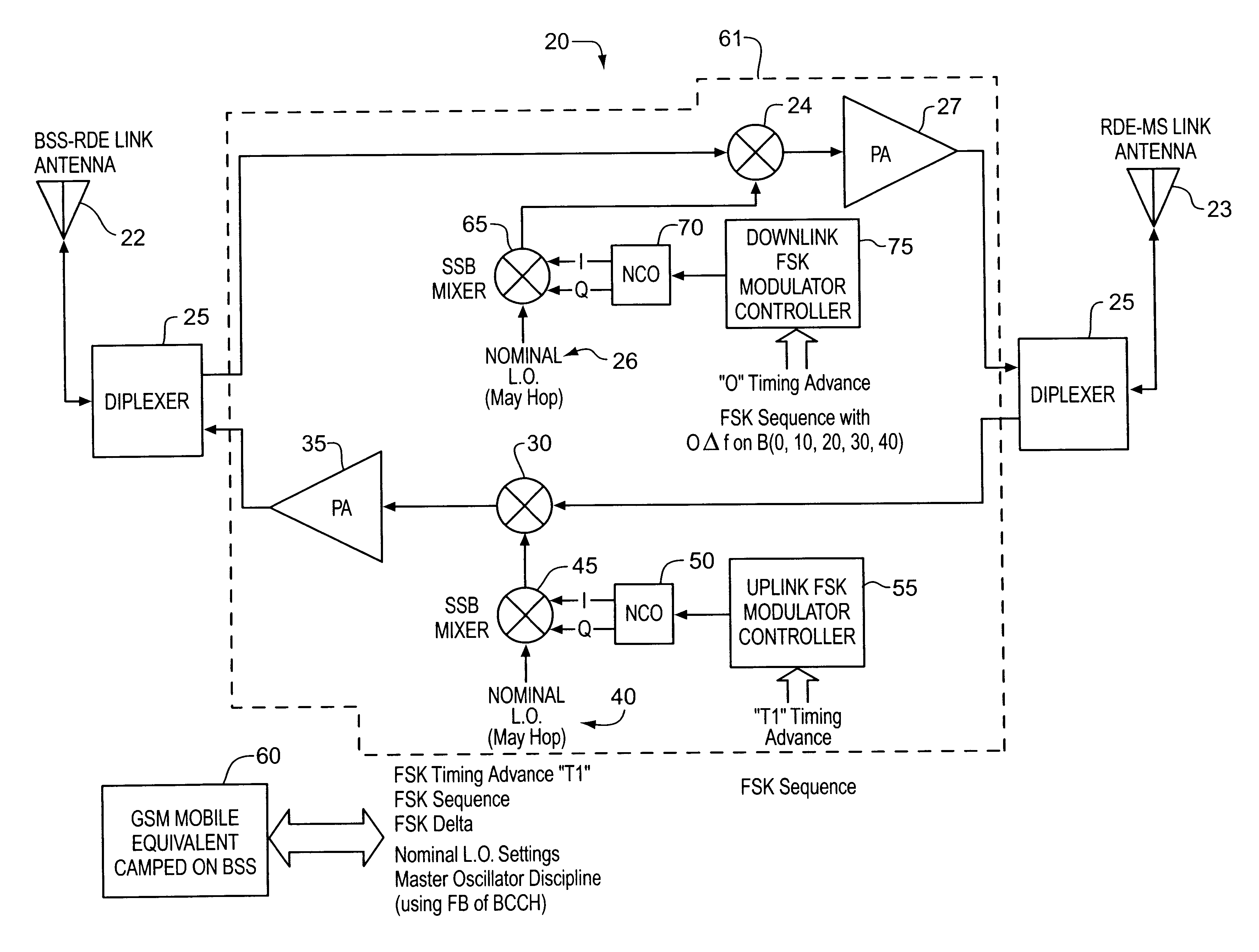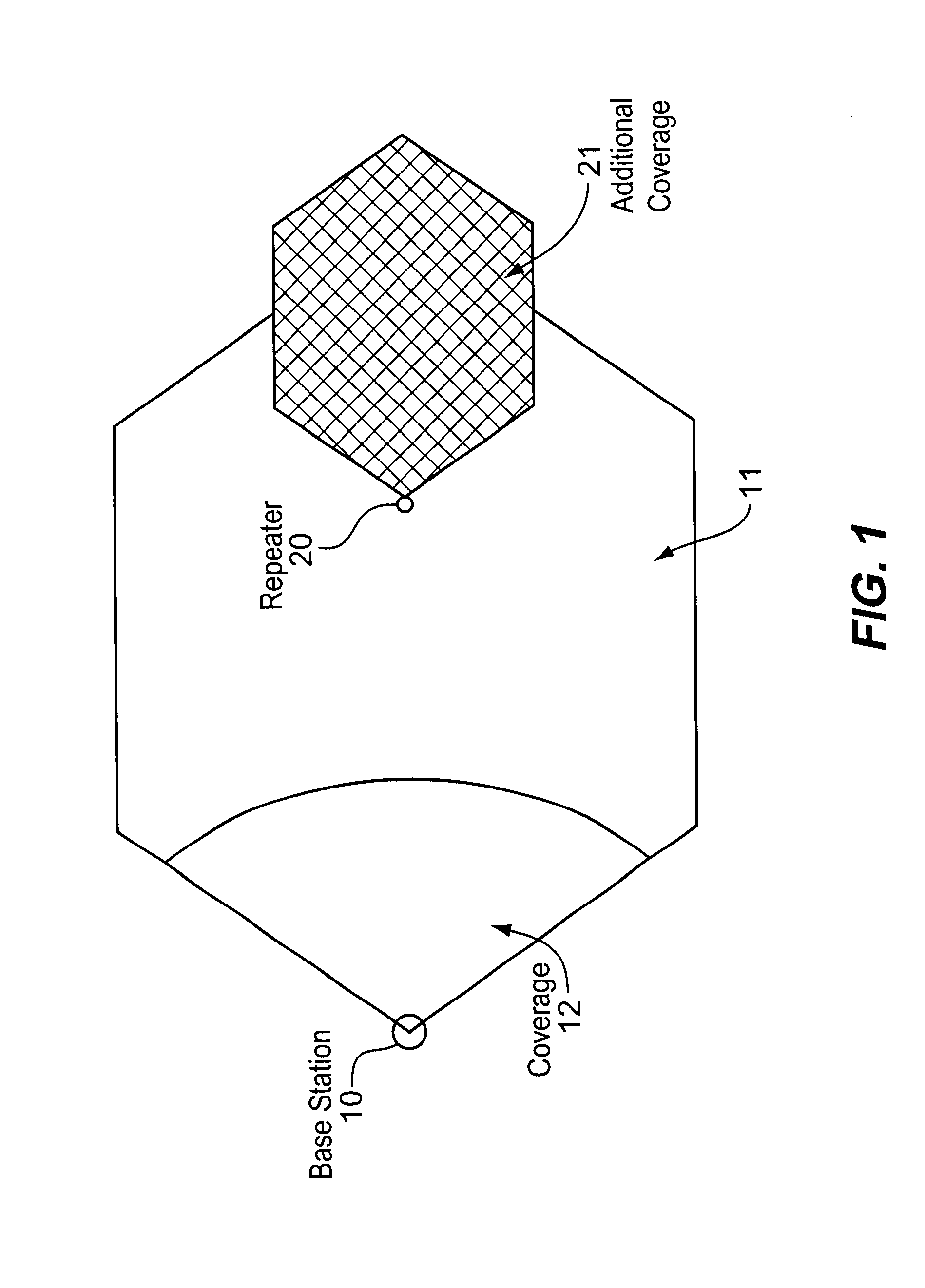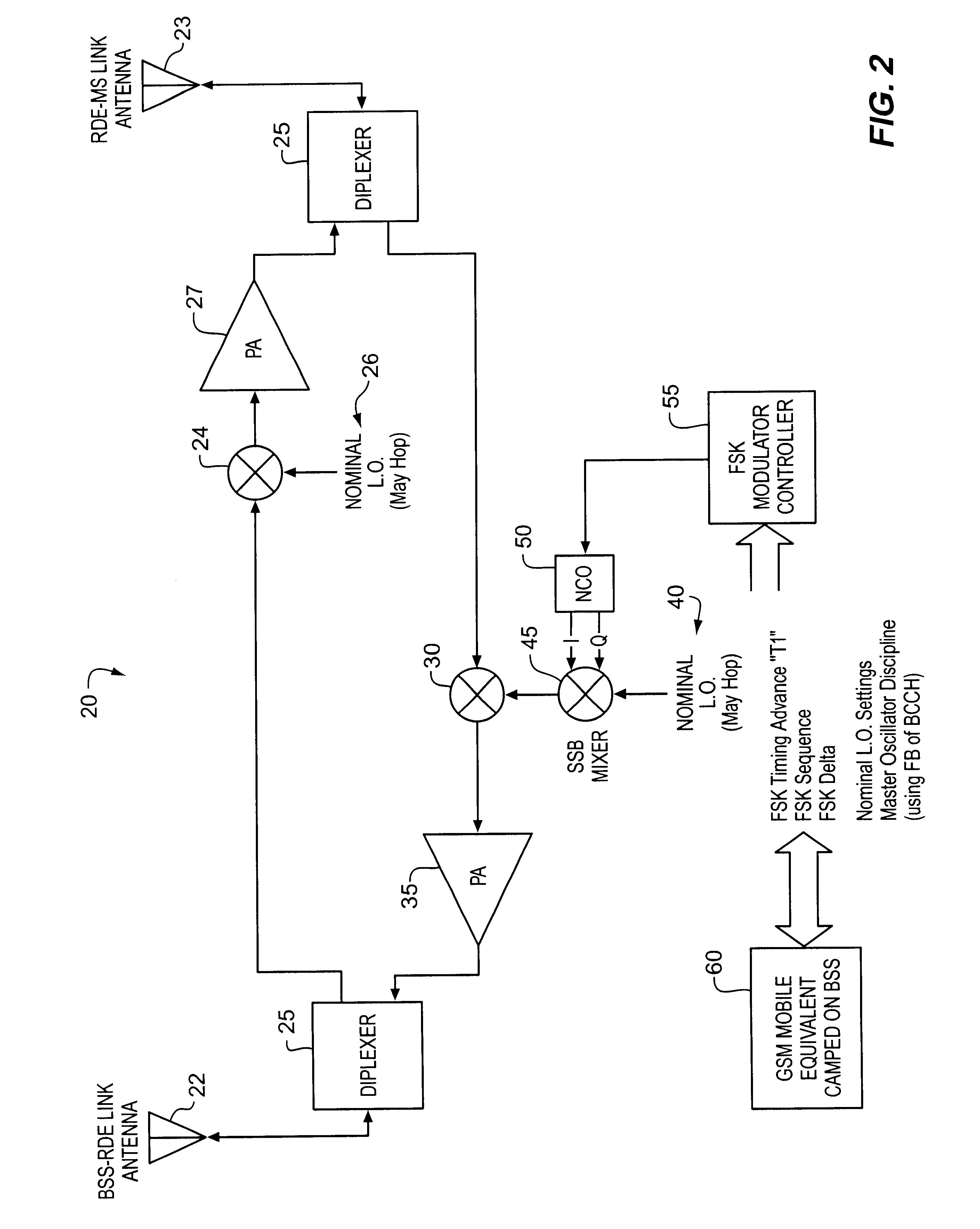RF signal repeater in mobile communications systems
a mobile communication system and signal repeater technology, applied in the field of rf signal repeaters, can solve the problems of increasing the bit error rate at the receiver, unstable feedback problem, and substantial feedback
- Summary
- Abstract
- Description
- Claims
- Application Information
AI Technical Summary
Problems solved by technology
Method used
Image
Examples
Embodiment Construction
g to one embodiment of the invention.
[0019]FIG. 3 shows a conceptual block diagram of an RF repeater with uplink and downlink signal tagging according to one embodiment of the invention.
[0020]FIG. 4 shows a conceptual block diagram of a location measurement unit with circuitry to detect tagged signals according to the present invention.
[0021]FIG. 5 shows the interaction between the location measurement unit and the mobile location center according to the present invention.
[0022]FIG. 6 illustrates the operation of an arctangent frequency discriminator.
DETAILED DESCRIPTION
[0023]Reference will now be made in detail to the present preferred embodiments of the invention, examples of which are illustrated in the accompanying drawings, wherein like reference numerals indicate like elements throughout the several views.
[0024]The invention provides RF repeaters with the ability to enhance signal to noise and interference ratios over selected areas within a given cell, in particular to enable...
PUM
 Login to View More
Login to View More Abstract
Description
Claims
Application Information
 Login to View More
Login to View More - R&D
- Intellectual Property
- Life Sciences
- Materials
- Tech Scout
- Unparalleled Data Quality
- Higher Quality Content
- 60% Fewer Hallucinations
Browse by: Latest US Patents, China's latest patents, Technical Efficacy Thesaurus, Application Domain, Technology Topic, Popular Technical Reports.
© 2025 PatSnap. All rights reserved.Legal|Privacy policy|Modern Slavery Act Transparency Statement|Sitemap|About US| Contact US: help@patsnap.com



